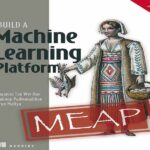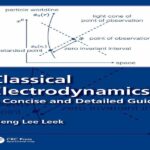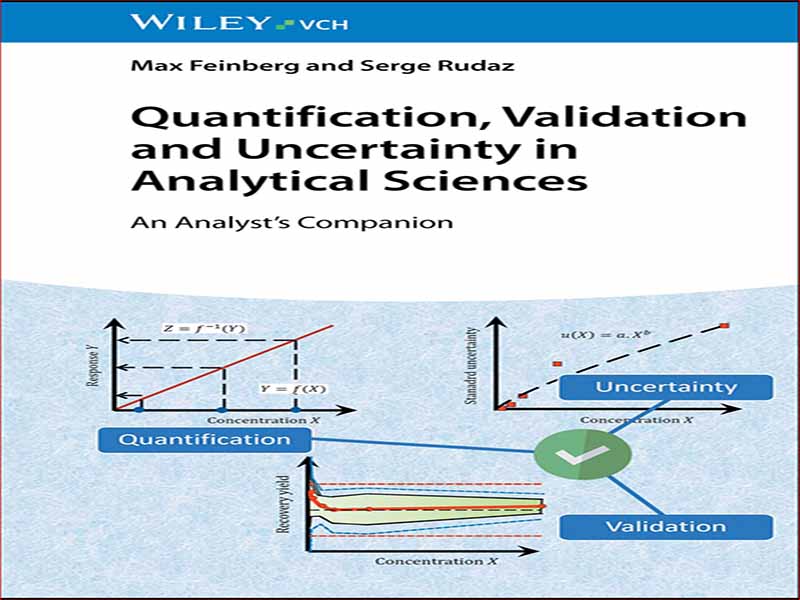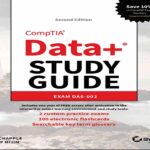- عنوان مجله: Quantification, Validation and Uncertainty in Analytical Sciences
- نویسنده: Max Feinberg
- حوزه: عدم قطعیت
- سال انتشار: 2024
- تعداد صفحه: 337
- زبان اصلی: انگلیسی
- نوع فایل: pdf
- حجم فایل: 8.97 مگابایت
چرا یک تحلیلگر روزانه میلیونها تجزیه و تحلیل در آزمایشگاهها برای تمام بخشهای صنعت و علم انجام میشود، زیرا بسیاری از افراد حاضرند برای این تحلیلها هزینه کنند، اگرچه تعداد کمی از انتشارات به مسائل اقتصادی میپردازند با این حال، گزارشی از سوی کمیسیون اروپا در سال 2002 به این نتیجه رسید که «به ازای هر یورو که به فعالیت اندازهگیری اختصاص مییابد، نزدیک به سه یورو تولید میشود» [1] اما آیا استفاده از یک نتیجه تحلیلی آسان و ساده است همیشه به شما اجازه میدهد تا تصمیم درستی بگیرید آیا می توانید آنها را تخمین بزنید – چگونه می توان از یک اندازه گیری کاذب به طور موثر استفاده کرد که چرا و چگونه می توان از مفهوم عدم قطعیت اندازه گیری استفاده کرد در این دیدگاه، ابزاری بر اساس فواصل پراکندگی آماری به نام نمایه دقت روش (MAP) به عنوان ستون فقرات کتاب پیشنهاد شده است روش MAP و تخمین MU در چندین مثال و کاربرگ های الگو ارائه شده است تا به تحلیلگران کمک کند تا این ابزار را به سرعت درک کنند. متأسفانه، همه آنها از دنیا رفتهاند، اما بسیاری از کتابهای شیمیسنجی منتشر شدهاند که ارزش افزوده آمار را به علوم تحلیلی ثابت میکند. 6، 7]، و دیگران در مورد اعتبارسنجی روش [8، 9] به کاربرد شیمی سنجی کمک می کند، اما هدف آشکار این نیست که آنچه در بسیاری از انتشارات ارزشمند موجود است، به طور دقیق به عدم قطعیت اندازه گیری پرداخته شود علوم تحلیلی [10-12] جنبه های محدودی را ارائه می دهند و رویکرد جامع تری را پیشنهاد نمی کنند دیدگاه ما در مورد ارتباط بین اعتبار سنجی و عدم قطعیت اندازه گیری به صورت فشرده [13] این کتاب دیدگاه ما را به طور گسترده تر و عملاً توسعه می دهد.
Why an Analyst’s Companion? Millions of analyses are carried out every day in laboratories for all sectors of industry and science. Many people are willing to pay for these analyses because they are considered effective in making a scientifically sound decision. Though few publications address the economics of analytical sciences, nonetheless, a report by the European Commission concluded in 2002 that “for every euro devoted to measurement activity, nearly three euros are generated” [1]. But is it easy and simple to use an analytical result, and does it always allow you to make the right decision? Some questions illustrate the risks involved in relying on a result: – How do you know that the laboratory used the method that gave the exact result? – Like any measurement, analysis is subject to error. How can you estimate them? – How can a spurious measurement be used effectively? This is the right time to explain why and how the concept of measurement uncertainty (MU) can be used to better manage these risks. This also means that a new challenge for analysts is to develop an appropriate method for estimating MU more explicitly applicable to analytical sciences. In this perspective, a tool based on the statistical dispersion intervals called method accuracy profile (MAP) is proposed as the backbone of the book. The theoretical aspects of the MAP procedure and MU estimation are presented in several examples and template worksheets to help analysts quickly grasp this tool. At the turn of the 1970s, three analytical chemists, Bruce Kowalski, Luc Massart and Svante Wold, conceptualized a discipline they called Chemometrics [2]. Unfortunately, they all have passed away since, but their work is still vivid. Many chemometrics books have been published, proving the added value of statistics to analytical sciences. Some are globally addressing chemometrics [3–5] other are more focused on statistics [6, 7], and others on method validation [8, 9]. This book contributes to the application of chemometrics, but the obvious aim is not to repeat what is available in many valuable publications. Only a few books precisely address measurement uncertainty in analytical sciences [10–12]. They present limited facets and do not propose a more comprehensive approach. The aim of this book is to describe a global procedure forMUestimation, easily applicable in analytical laboratories. In a recent publication, we have exposed in a condensed manner our view of the link between validation and measurement uncertainty [13]. This book develops more extensively and practically our viewpoint.
این کتاب را میتوانید از لینک زیر بصورت رایگان دانلود کنید:
Download: Quantification, Validation and Uncertainty in Analytical Sciences



































نظرات کاربران